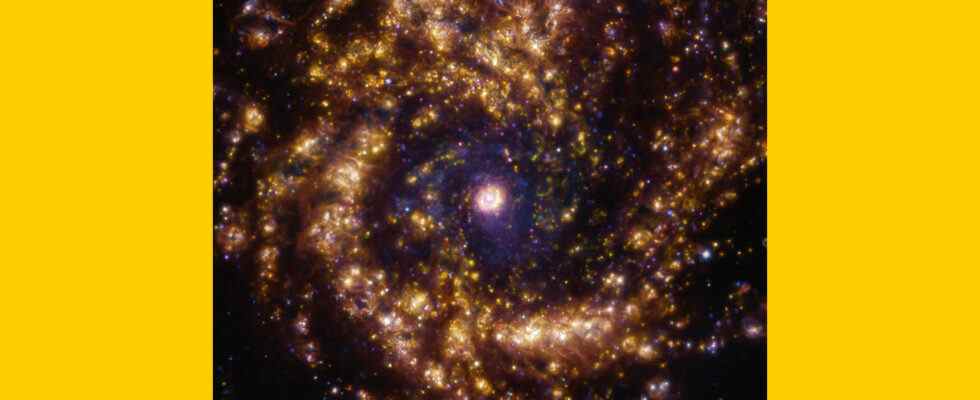Since telescopes such as Hubble and James Webb are in space, they have the opportunity to see some celestial objects much more clearly. On the other hand, there are very powerful telescopes on the Earth’s surface. In addition, ground telescopes also have various advantages, as they can be developed much more easily.
We take a closer look at the formation of stars
One of the most important surface telescopes is the European Southern Observatory’s (ESO) telescope called Very Large. Quite large as its name suggests, Very Large consists of four separate telescopes, each with a 8.2-metre primary mirror, working together to study space in the visible light and infrared wavelengths.
ESO shared this recent image showing the stunning spiral galaxy NGC 4303. This image showcases spectroscopy data colored to show the different elements collected as part of High Angular resolution Physics in Nearby Galaxies.

Described as a starburst galaxy, NGC 4303 stands out as a powerful star forming region. Scientists are trying to understand how stars are formed by studying this galaxy. ESO, on the other hand, uses the following statements about starburst galaxies and star formation:
Stars form when clouds of cold gas collapse. Energetic radiation from newborn stars heats and ionizes the remaining surrounding gas. The ionized gas glows and acts as a sign of ongoing star formation. In this stunning, jewel-like image, this glowing gas can be seen as a swirl of gold: traces of the birth of stars.
The golden glow is the result of combining observations taken at different wavelengths with the Multi-Unit Spectroscopic Explorer (MUSE) instrument on ESO’s Very Large Telescope (VLT) in Chile. Here, ionized oxygen, hydrogen, and sulfur gas clouds are shown in blue, green, and red, respectively.
In the light of all this information, it is really exciting to examine the image in detail. So what do you think about the stars and the galaxies that make them up? You can share your views with us in the comments section.
